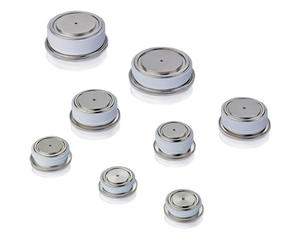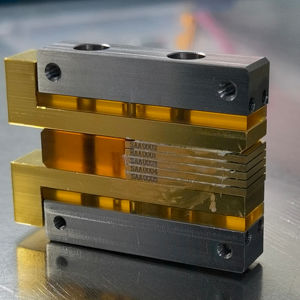Thyristors Online | High-Quality Power Semiconductors
Thyristors Demystified: Your Hindi Guide to the Power Control Wizard!
(What Is Thyristor In Hindi)
Ever peeked inside those hefty voltage stabilizers humming away in Indian homes? Or wondered how the streetlights dim smoothly? Chances are, a tiny but mighty component called a Thyristor is silently doing the heavy lifting. Think of it as the ultimate gatekeeper for electricity, especially powerful AC currents. It’s fundamental in countless devices we rely on daily, especially across India’s vast electrical landscape. So, let’s crack open this crucial electronic component and see what makes it tick!
1. What is a Thyristor? The Solid-State Power Switch Explained Simply
Forget complicated jargon. A thyristor is essentially a super-smart electronic switch. But unlike the simple switch on your wall, it controls massive amounts of electrical power using tiny signals. Imagine a sturdy gate controlling a raging river. The gate (thyristor) stays shut until a small key (a tiny electrical pulse) unlocks it. Once open, the river (electricity) flows freely until the flow naturally stops (like when the AC current reverses direction). This core action – switching huge power with a small trigger – is its magic.
Structurally, think of it as a sandwich made of four alternating layers of semiconductor material (PNPN), forming three crucial junctions. It has three terminals: Anode (where main current enters), Cathode (where main current exits), and Gate (the control key). The gate is the boss. A small pulse here tells the thyristor to switch ON, allowing current to surge from Anode to Cathode. Crucially, once ON, it stays ON even if you remove the gate signal. It only turns OFF when the main current flowing through it drops to nearly zero. This “latching” behavior is key to its function.
2. Why Use Thyristors? The Power Control Benefits They Offer
So why choose a thyristor over a regular switch or transistor? It boils down to power, efficiency, and ruggedness:
Handle Massive Power: Thyristors are built tough. They can switch and control currents thousands of times larger than what triggered them. Think industrial motors, heavy-duty machinery common in Indian factories, or high-voltage transmission lines – thyristors manage this brute force effortlessly.
Simple Control: Turning them ON is incredibly simple – just a brief pulse to the gate. You don’t need to hold the signal; they latch ON by themselves. This simplifies control circuits significantly.
High Efficiency: When ON, they act like a closed switch with very low resistance. This means minimal voltage drop across them and minimal power wasted as heat compared to other methods. Less wasted energy means cooler running and lower electricity bills.
Rugged & Reliable: They are solid-state devices – no moving parts. This makes them incredibly robust, long-lasting, and resistant to shock and vibration, perfect for India’s diverse and sometimes harsh environments.
Precise AC Control: They excel at controlling alternating current (AC). By precisely timing the gate pulse relative to the AC waveform, you can control how much power gets delivered to a load. This is vital for tasks like smoothly controlling motor speed or adjusting light brightness (dimmer switches).
3. How Does a Thyristor Work? Understanding the ON/OFF Magic
Let’s break down the thyristor’s action step-by-step:
The OFF State: Initially, with no gate signal and the main voltage applied (Anode positive relative to Cathode), the thyristor blocks current. It’s like a closed gate holding back the flow.
The Trigger: Apply a small positive voltage pulse to the gate terminal relative to the cathode. This injects charge carriers into the inner layers.
The Turn-ON (Latching): This gate pulse kickstarts a process where the internal PNPN structure rapidly switches from blocking to conducting. Current surges from Anode to Cathode. Crucially, even if you remove the gate pulse immediately after triggering, the thyristor stays ON. It has “latched” into the conducting state.
Conduction: Now, it behaves like a closed switch. Current flows freely as long as a minimum “holding current” is maintained. It happily carries the full load current.
The Turn-OFF (Commutation): The thyristor cannot be turned OFF by the gate. It turns OFF only when the main current flowing through it (Anode to Cathode) is reduced below a certain threshold (the holding current) for a short time. This naturally happens in AC circuits when the current crosses zero and reverses direction. In DC circuits, you need special circuits to forcefully bring the current to zero. This process is called “commutation.”
4. Thyristor Applications: Where You Find Them Powering India
Thyristors are everywhere, silently managing power. Here are key places you’ll find them working hard across India:
Voltage Stabilizers & UPS Systems: Essential for protecting appliances from India’s frequent voltage fluctuations. Thyristors (often in forms like TRIACs) quickly switch taps on transformers to maintain steady output voltage.
Motor Speed Controllers: Used extensively in factories, conveyor belts, pumps for agriculture, and even ceiling fan regulators. They precisely vary the power supplied to AC motors, controlling their speed efficiently.
Light Dimmers: That smooth control for mood lighting in homes, restaurants, or during Diwali decorations? Thyristors (TRIACs) chop the AC waveform to reduce the average power reaching the bulb.
Battery Chargers: Efficiently manage the charging current and voltage for everything from inverter batteries to electric rickshaws.
Industrial Heating Control: Precisely regulate the power fed to large furnaces, induction heaters, and welding machines.
High-Voltage Direct Current (HVDC) Transmission: Vital for efficiently transmitting massive amounts of electricity over long distances, like between power plants and major cities. Thyristors form the heart of the converter stations.
Power Supplies: Used in various types of power supplies for industrial equipment and laboratories.
5. Thyristor FAQs: Clearing Up Common Questions
Let’s tackle some frequent questions about these power control chips:
Can a Thyristor control DC current? Yes, but turning it OFF is trickier. Since DC doesn’t naturally go to zero, you need an extra circuit to force the current down to zero for commutation. This adds complexity.
What’s the difference between a Thyristor and a Transistor? Both are switches, but transistors are proportional (output depends on input signal strength) and can be turned OFF by the control signal. Thyristors are bistable (fully ON or OFF) and latch ON; the gate only controls turn-on, not turn-off. Thyristors handle much higher power.
What are SCR, TRIAC, and Diac? Are they Thyristors? SCR (Silicon Controlled Rectifier) is the most common and basic type of thyristor, controlling current in one direction. TRIAC (Triode for AC) is like two SCRs back-to-back, allowing it to control AC current in both directions. Diac is often used to trigger TRIACs reliably. So SCR and TRIAC are specific types of thyristors.
Why do Thyristors sometimes fail? Common causes include excessive voltage (surges/spikes), excessive current (overload), overheating due to poor cooling or high switching frequency, or incorrect gate drive signals. Proper heat sinking and circuit protection are vital.
(What Is Thyristor In Hindi)
How do I choose the right Thyristor? Key specs are: Maximum current it can handle (IT(RMS) or IT(AV)), maximum blocking voltage (VDRM), gate trigger current (IGT), and holding current (IH). You need values comfortably exceeding your circuit’s requirements.


